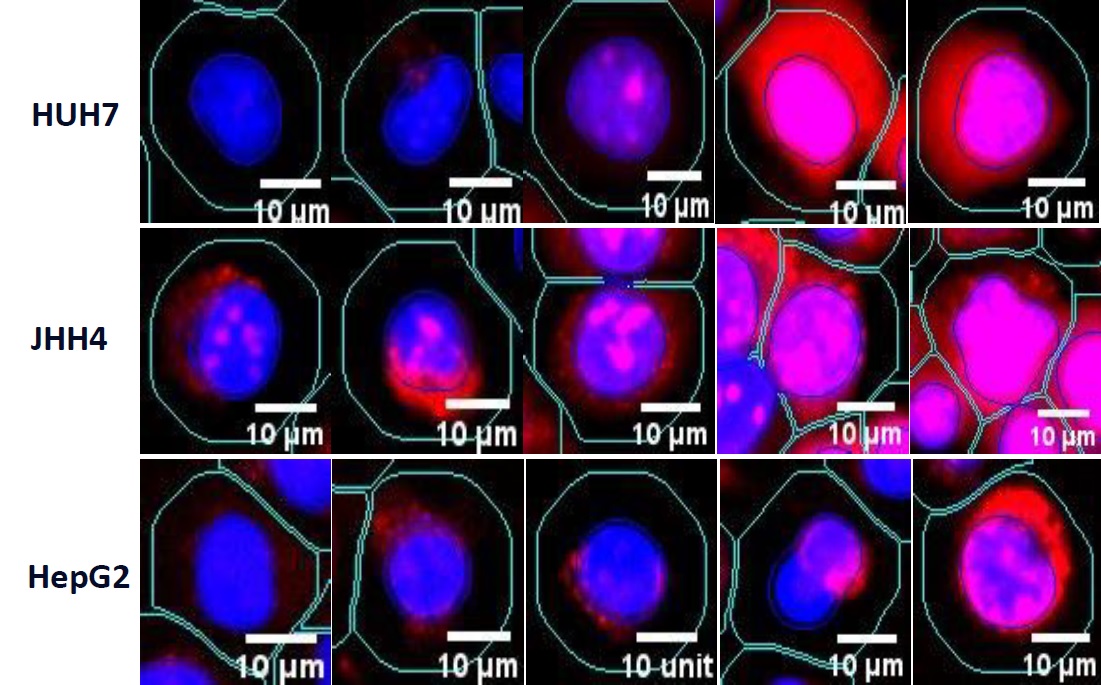The Gullapalli lab is focused on understanding the role of environmental pollutants as a driver of human hepatobiliary diseases. We study environmental pollutants such as heavy metals (e.g., cadmium), chemicals (e.g., polycyclic aromatic hydrocarbons) and nano-/microplastic (NMPs) exposures on human hepatic liver function with a focus on understanding metabolic (dysfunction) associated fatty liver disease (MAFLD).
Key research questions of interest in the Gullapalli lab:
i. How do chronic, low-dose heavy metal exposures (e.g., cadmium) affect insulin signaling activity and metabolic function in the human liver?
ii. What role do nano- and microplastic exposures play in fatty liver disease causation?
iii. Do type II diabetics have increased susceptibility to environmental pollutants compared to non-diabetics?
Ongoing Projects:
a. Chronic, Low-Dose Exposures of Cadmium (CLEC) in Metabolic (Dysfunction) Associated Fatty Liver Disease: We have developed novel invitro models which recapitulate the effects of sustained exposures of cadmium under normoglycemic and hyperglycemic conditions. We use CLEC models to understand the insulin-PIK3CA-Akt signaling axis dysfunction with a focus on long-term reactive oxygen species (ROS) imbalances and oxidative stress dysfunction in liver cells.
Experimental techniques – qPCR, high throughput imaging platforms, Western blots, fluorescence microscopy, NGS, metabolomics.

Fig 1. CLEC exposure model developed in the Gullapalli lab (PMID: 39191366)
b. Effects of chronic heavy metal exposures on hepatic mitochondrial dysfunction: The liver is a major organ involved in a wide range of physiological functions. Mitochondria are the key organelles involved in normal liver function. An ongoing project in the lab measures the effects of sustained environmental pollutants (cadmium and plastics) on hepatic mitochondrial dysfunction. We also study the effects of pollutants on glucose and fatty acid metabolism regulated primarily at the mitochondrial level.
Experimental techniques – Fluorescence microscopy, Agilent SeaHorse platform, mitochondrial physiology and imaging, molecular biology, metabolomics.

Fig 2. Cd induced ROS species generation protocol (PMID: 38314817)
c. Nano- and Microplastic accumulation and dysfunction in the liver: In collaboration with the Campen lab, we are studying the effects of accumulation of nano- and microplastic pollutants in the liver. We study the accumulative patterns of plastic pollutants in decedent tissues of individuals living in the state of New Mexico. We are also developing novel, cutting-edge optical techniques such as polarization wave microscopy (PWM) and multi-spectral fluorescence to detect plastics in tissues. Future work will focus on understanding mechanisms of plastic pollution induced fatty liver signaling dysfunction in animal and invitro models. We are also interested in understanding changes in the physical and surface chemistry of environmental plastic pollution.
Experimental techniques – Molecular biology, FTIR and Raman, fluorescence correlation spectroscopy, fluorescence lifetime, surface chemistry, polarization wave imaging, metabolomics.

Fig 3. Polarization Wave Imaging of putative nano- and microplastics in human liver(PMID: 39901044)

Associate Professor, Department of Pathology, UNM
Associate Professor, Department of Chemical and Biological Engineering, UNM
Education:
Email – rgullapalli@salud.unm.edu
LinkedIn – Rama Gullapalli
Curriculum Vitae - Rama Gullapalli’s CV

Rahul Kumar, M.Tech
Graduate Research Assistant, Departments of Pathology and Biomedical Engineering, UNM
Education:
Email – RaKumar@salud.unm.edu
LinkedIn – Rahul Kumar

Joseph Stenberg, DO
Pathology Resident Physician, Department of Pathology, UNM
Education:
Email – JStenberg@salud.unm.edu
LinkedIn –Joseph Stenberg

Ashwin Chinala
Undergraduate student researcher, Department of Chemical and Biological Engineering, UNM
Education
Email – achinala@salud.unm.edu

Dhruv Grandhe
High school research student
Education:
Gullapalli Lab Collaborators
2025
- A review article on the role of environmental heavy metal pollution in insulin signaling, oxidative stress and mitochondrial function of the liver was published in Environmental Pollution (Impact Factor: 7.3). Rahul and Ashwin from the Gullapalli lab played a big role! Collaborators – Matt Campen and Marcus Garcia (College of Pharmacy) and Joe Endicott (Department of Pathology). Article Link - https://shorturl.at/sIq7b
- Dr. Joseph Stenberg joined the Gullapalli lab and will be working on a digital pathology project focused on human-computer interactions. Welcome Dr. Stenberg!
- Rahul collaborated with Dr. Amrita Vadher from the Rajaiya lab and published in the journal, PLOS Pathogens. Congratulations, Rahul and Amrita! See article at https://shorturl.at/3JcvY (May 2025).
- Rama was recently featured in an article in CAP Today magazine, highlighting a recent publication. The article was published in February 2025 in the Archives of Pathology and Laboratory Medicine:
Journal Article - https://shorturl.at/gQ8hX
- The Gullapalli lab attended the annual Society of Toxicology (SOT meeting) in Orlando and presented two posters at the meeting focused on Cadmium toxicology and Microplastics in the liver (Mar 2025).
- Rama was part of a publication in Nature Medicine identifying nano- and microplastics in human tissues for the first time! (see more at https://shorturl.at/DemM8). This landmark publication from the Campen lab demonstrates increasing levels of nano- and microplastics in human brains and liver for the first time (Feb 2025).
- Dhruv Grandhe, a high school student from the Gullapalli lab, has been accepted into the University of Pennsylvania! Congratulations, Dhruv! Wish you all the best! Dhruv will be studying Biophysics and Finance as a dual major (Jan 2025).
2024
- Rama was part of a collaborative effort on Generative AI in Pathology published in the journal “Modern Pathology”. (Dec 2024) See more at https://shorturl.at/DjcMA
- A chapter written by Rama on “Ethics of AI in Pathology”, was published in the book, “Artificial Intelligence in Pathology: Principles and Applications” published by Elsevier (Nov 2024). More details at https://shorturl.at/focV1
- Rahul published his second paper in the journal, Toxicology (IF: 4.8), describing a novel CLEC model developed in the lab. See more at https://shorturl.at/X4CqQ. Great job, Rahul! (Nov 2024).
- Rahul presented at the UNM Cardiovascular Signature Program day (Nov 2024).
- Rahul received a travel award from the Southwest Transformative Educational Advancement and Mentoring (STEAM) Network Program 2024 (Aug 2024).
- Dhruv was selected as a finalist in the Genes in Space Proposal competition (July 2024). See more - https://www.genesinspace.org/. Great job, Dhruv!
- Dhruv, a high school student in the Gullapalli lab, won the 1st place in the NM state science fair competition for biology and was placed 8th overall! Congrats Dhruv! (April 2024).
- Rahul and Rama attended and presented multiple posters at the annual Society of Toxicology meeting held at Salt Lake City, UT in March 2024.
- Rahul Kumar, a third year PhD student in the Gullapalli lab, published an article on the use of DHE dye to measure reactive oxygen species in the Journal of Visualized Experiments. See more at https://shorturl.at/omKbW. Congratulations, Rahul! First of many! (Jan 2024).
- Rahul received a doctoral conference presentation award from UNM to attend the annual SOT 2024 meeting (Jan 2024). Congrats Rahul!
Key research questions of interest in the Gullapalli lab:
i. How do chronic, low-dose heavy metal exposures (e.g., cadmium) affect insulin signaling activity and metabolic function in the human liver?
ii. What role do nano- and microplastic exposures play in fatty liver disease causation?
iii. Do type II diabetics have increased susceptibility to environmental pollutants compared to non-diabetics?
Ongoing Projects:
a. Chronic, Low-Dose Exposures of Cadmium (CLEC) in Metabolic (Dysfunction) Associated Fatty Liver Disease: We have developed novel invitro models which recapitulate the effects of sustained exposures of cadmium under normoglycemic and hyperglycemic conditions. We use CLEC models to understand the insulin-PIK3CA-Akt signaling axis dysfunction with a focus on long-term reactive oxygen species (ROS) imbalances and oxidative stress dysfunction in liver cells.
Experimental techniques – qPCR, high throughput imaging platforms, Western blots, fluorescence microscopy, NGS, metabolomics.

Fig 1. CLEC exposure model developed in the Gullapalli lab (PMID: 39191366)
b. Effects of chronic heavy metal exposures on hepatic mitochondrial dysfunction: The liver is a major organ involved in a wide range of physiological functions. Mitochondria are the key organelles involved in normal liver function. An ongoing project in the lab measures the effects of sustained environmental pollutants (cadmium and plastics) on hepatic mitochondrial dysfunction. We also study the effects of pollutants on glucose and fatty acid metabolism regulated primarily at the mitochondrial level.
Experimental techniques – Fluorescence microscopy, Agilent SeaHorse platform, mitochondrial physiology and imaging, molecular biology, metabolomics.

Fig 2. Cd induced ROS species generation protocol (PMID: 38314817)
c. Nano- and Microplastic accumulation and dysfunction in the liver: In collaboration with the Campen lab, we are studying the effects of accumulation of nano- and microplastic pollutants in the liver. We study the accumulative patterns of plastic pollutants in decedent tissues of individuals living in the state of New Mexico. We are also developing novel, cutting-edge optical techniques such as polarization wave microscopy (PWM) and multi-spectral fluorescence to detect plastics in tissues. Future work will focus on understanding mechanisms of plastic pollution induced fatty liver signaling dysfunction in animal and invitro models. We are also interested in understanding changes in the physical and surface chemistry of environmental plastic pollution.
Experimental techniques – Molecular biology, FTIR and Raman, fluorescence correlation spectroscopy, fluorescence lifetime, surface chemistry, polarization wave imaging, metabolomics.

Fig 3. Polarization Wave Imaging of putative nano- and microplastics in human liver(PMID: 39901044)

Associate Professor, Department of Pathology, UNM
Associate Professor, Department of Chemical and Biological Engineering, UNM
Education:
Email – rgullapalli@salud.unm.edu
LinkedIn – Rama Gullapalli
Curriculum Vitae - Rama Gullapalli’s CV

Rahul Kumar, M.Tech
Graduate Research Assistant, Departments of Pathology and Biomedical Engineering, UNM
Education:
Email – RaKumar@salud.unm.edu
LinkedIn – Rahul Kumar

Joseph Stenberg, DO
Pathology Resident Physician, Department of Pathology, UNM
Education:
Email – JStenberg@salud.unm.edu
LinkedIn –Joseph Stenberg

Ashwin Chinala
Undergraduate student researcher, Department of Chemical and Biological Engineering, UNM
Education
Email – achinala@salud.unm.edu

Dhruv Grandhe
High school research student
Education:
Gullapalli Lab Collaborators
2025
- A review article on the role of environmental heavy metal pollution in insulin signaling, oxidative stress and mitochondrial function of the liver was published in Environmental Pollution (Impact Factor: 7.3). Rahul and Ashwin from the Gullapalli lab played a big role! Collaborators – Matt Campen and Marcus Garcia (College of Pharmacy) and Joe Endicott (Department of Pathology). Article Link - https://shorturl.at/sIq7b
- Dr. Joseph Stenberg joined the Gullapalli lab and will be working on a digital pathology project focused on human-computer interactions. Welcome Dr. Stenberg!
- Rahul collaborated with Dr. Amrita Vadher from the Rajaiya lab and published in the journal, PLOS Pathogens. Congratulations, Rahul and Amrita! See article at https://shorturl.at/3JcvY (May 2025).
- Rama was recently featured in an article in CAP Today magazine, highlighting a recent publication. The article was published in February 2025 in the Archives of Pathology and Laboratory Medicine:
Journal Article - https://shorturl.at/gQ8hX
- The Gullapalli lab attended the annual Society of Toxicology (SOT meeting) in Orlando and presented two posters at the meeting focused on Cadmium toxicology and Microplastics in the liver (Mar 2025).
- Rama was part of a publication in Nature Medicine identifying nano- and microplastics in human tissues for the first time! (see more at https://shorturl.at/DemM8). This landmark publication from the Campen lab demonstrates increasing levels of nano- and microplastics in human brains and liver for the first time (Feb 2025).
- Dhruv Grandhe, a high school student from the Gullapalli lab, has been accepted into the University of Pennsylvania! Congratulations, Dhruv! Wish you all the best! Dhruv will be studying Biophysics and Finance as a dual major (Jan 2025).
2024
- Rama was part of a collaborative effort on Generative AI in Pathology published in the journal “Modern Pathology”. (Dec 2024) See more at https://shorturl.at/DjcMA
- A chapter written by Rama on “Ethics of AI in Pathology”, was published in the book, “Artificial Intelligence in Pathology: Principles and Applications” published by Elsevier (Nov 2024). More details at https://shorturl.at/focV1
- Rahul published his second paper in the journal, Toxicology (IF: 4.8), describing a novel CLEC model developed in the lab. See more at https://shorturl.at/X4CqQ. Great job, Rahul! (Nov 2024).
- Rahul presented at the UNM Cardiovascular Signature Program day (Nov 2024).
- Rahul received a travel award from the Southwest Transformative Educational Advancement and Mentoring (STEAM) Network Program 2024 (Aug 2024).
- Dhruv was selected as a finalist in the Genes in Space Proposal competition (July 2024). See more - https://www.genesinspace.org/. Great job, Dhruv!
- Dhruv, a high school student in the Gullapalli lab, won the 1st place in the NM state science fair competition for biology and was placed 8th overall! Congrats Dhruv! (April 2024).
- Rahul and Rama attended and presented multiple posters at the annual Society of Toxicology meeting held at Salt Lake City, UT in March 2024.
- Rahul Kumar, a third year PhD student in the Gullapalli lab, published an article on the use of DHE dye to measure reactive oxygen species in the Journal of Visualized Experiments. See more at https://shorturl.at/omKbW. Congratulations, Rahul! First of many! (Jan 2024).
- Rahul received a doctoral conference presentation award from UNM to attend the annual SOT 2024 meeting (Jan 2024). Congrats Rahul!
Lab mailing address:
915 Camino De Salud NE
Fitz Hall, Room 315
MSC08-4640
Albuquerque, New Mexico 87131
Rama R. Gullapalli, MD, PhD
Department of Pathology
Fitz Hall, Room 333A
University of New Mexico School of Medicine
Albuquerque, New Mexico 87131